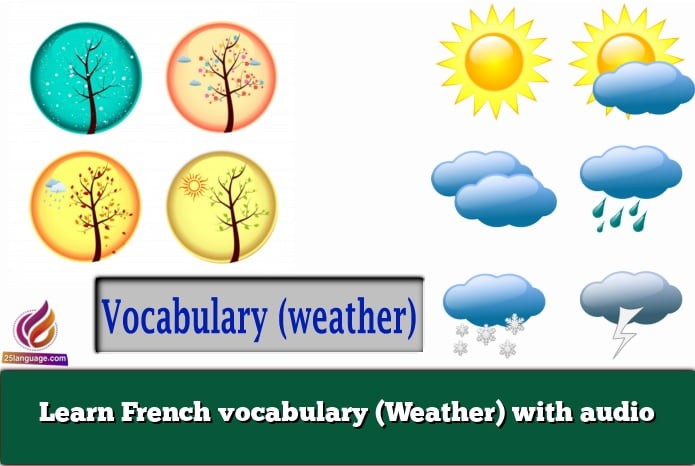When to Use “C’est” vs. “Il est” in French

Mastering the nuances of “c’est” and “il est” can elevate your French skills and deepen your understanding of the language. Though both translate to “it is indeed” in English, they serve different purposes and convey unique meanings.In this lesson,we’ll unlock the secrets behind when to use each phrase,enabling you to express yourself more accurately and confidently in various contexts. Let’s dive in and transform your French conversations!
Navigating the Nuances of C’est and Il est in French
In French,both c’est and il est can translate to “it is” in english,yet their usage is distinct and context-dependent. Generally, c’est is used before a noun, pronoun, or an adjective that describes a noun. It is perfect for introducing someone or something or when discussing more general ideas. For example:
- C’est un bon film. (It’s a good movie.)
- C’est Marie qui parle. (It’s Marie who’s talking.)
- C’est incroyable! (It’s unbelievable!)
On the other hand, il est is usually employed before adjectives used to describe a specific subject, particularly when the subject is a person or when giving a description that does not introduce a new topic. Such as:
- Il est bright. (He is intelligent.)
- Il est tard. (It is indeed late.)
- Il est français. (He is French.)
| French Example | Rule | English Translation |
|---|---|---|
| C’est un restaurant italien. | Use when introducing a noun. | It is indeed an Italian restaurant. |
| C’est magnifique! | Use with an exclamation or general idea. | It is indeed splendid! |
| Il est drôle. | use to describe a specific subject. | He is funny. |
| Il est en classe. | Use when stating a fact about a specific subject. | He is in class. |
understanding the Context: Choosing Between C’est and Il est
In the french language, choosing between c’est and il est often confuses learners, as both translate to “it is” in English, yet they serve different purposes. C’est is typically used for identifying or introducing something, particularly when the noun is accompanied by a determiner or when referring to an event. As an example:
- C’est un livre intéressant. (It’s an interesting book.)
- C’est la fête demain. (It’s the party tomorrow.)
Conversely, il est is usually employed to describe someone or something, especially when the noun is not specified or when using adjectives. Additionally, it is indeed commonly used for time expressions. For example:
- Il est grand. (He is tall.)
- Il est 3 heures. (It is 3 o’clock.)
| French Example | Rule | English Translation |
|---|---|---|
| C’est un film passionnant. | Use with a noun and determiner. | It’s an exciting movie. |
| C’est l’hiver. | Use for seasons or events. | It’s winter. |
| Il est intelligent. | Use for descriptions without a determiner. | He is intelligent. |
| Il est tard. | Use for time expressions. | It is indeed late. |
Practical Tips for Mastering C’est and Il est in Everyday Conversation
Understanding when to use c’est and il est is essential for constructing meaningful sentences in French. Both phrases translate to “it is” in English,but their usage differs based on context. C’est is used to identify someone or something, often followed by a noun or a pronoun, and is typically used when introducing people or things, making general statements, or expressing opinions. In contrast, il est is generally used to describe a person’s characteristics or to indicate a situation or location. hear are some important distinctions:
- C’est is used for:
- Identifying people or things: C’est un médecin. (He is a doctor.)
- General statements: C’est incroyable! (It’s incredible!)
- Expressions of opinion: C’est triste. (It’s sad.)
- Il est is used for:
- Describing someone’s profession or characteristics: Il est intelligent. (He is intelligent.)
- Indicating time: Il est deux heures. (It is two o’clock.)
- stating the weather: Il est froid. (It is cold.)
| French Example | Rule | English Translation |
|---|---|---|
| C’est une belle journée. | General statement,introducing a noun | It’s a beatiful day. |
| Il est médecin. | Describing profession with a noun | He is a doctor. |
| C’est mon ami. | Identifying someone | This is my friend. |
| Il est à la maison. | Indicating location | He is at home. |
| C’est facile à comprendre. | opinion or general statement | It’s easy to understand. |
| Il est ce qu’il est. | Describing a state of being | He is what he is. |
Clarifying the Differences: A Deep Dive into French Expressions with C’est and Il est
In French, both c’est and il est translate to “it is indeed” in English, but they are used in different contexts.C’est is typically used when introducing or identifying something or someone, or when describing a general situation. It is often followed by a noun, a pronoun, or a noun phrase. For instance:
- C’est un bon film. (It’s a good movie.)
- C’est ma sœur. (That’s my sister.)
- C’est incroyable! (it’s incredible!)
On the other hand, il est is used when describing someone or something in terms of their qualities and is generally followed by an adjective or profession. This expression emphasizes the state or characteristic of a subject rather than identification. For example:
- Il est malade. (He is sick.)
- Il est professeur. (He is a teacher.)
- Il est amical. (He is kind.)
| French Expression | Usage Rule | English Translation |
|---|---|---|
| C’est… | Used for identification or introduction. | It is… |
| Il est… | Used for description of characteristics or qualities. | He is… |
Closing Remarks
Conclusion: C’est vs. Il est
Félicitations! You’ve taken a significant step in mastering the nuances of French with today’s lesson on when to use “c’est” and “il est.” Remember, these expressions may seem subtle, but they serve critically important roles in communication.
To recap, “c’est” is generally used with nouns and emphasizes identity or categorization, while “il est” is best for adjectives and is often used to describe people or situations. This distinction helps convey your thoughts more clearly and enriches your understanding of the language.
Now that you’ve grasped these concepts, I encourage you to practice incorporating “c’est” and “il est” into your everyday conversations. Experiment with new sentences, whether it’s describing your favorite books or introducing friends. The more you use these phrases, the more comfortable you will become!
Keep pushing forward on your language-learning journey. every step you take brings you closer to fluency! Bonne chance, and have fun exploring the beautiful world of French!





























